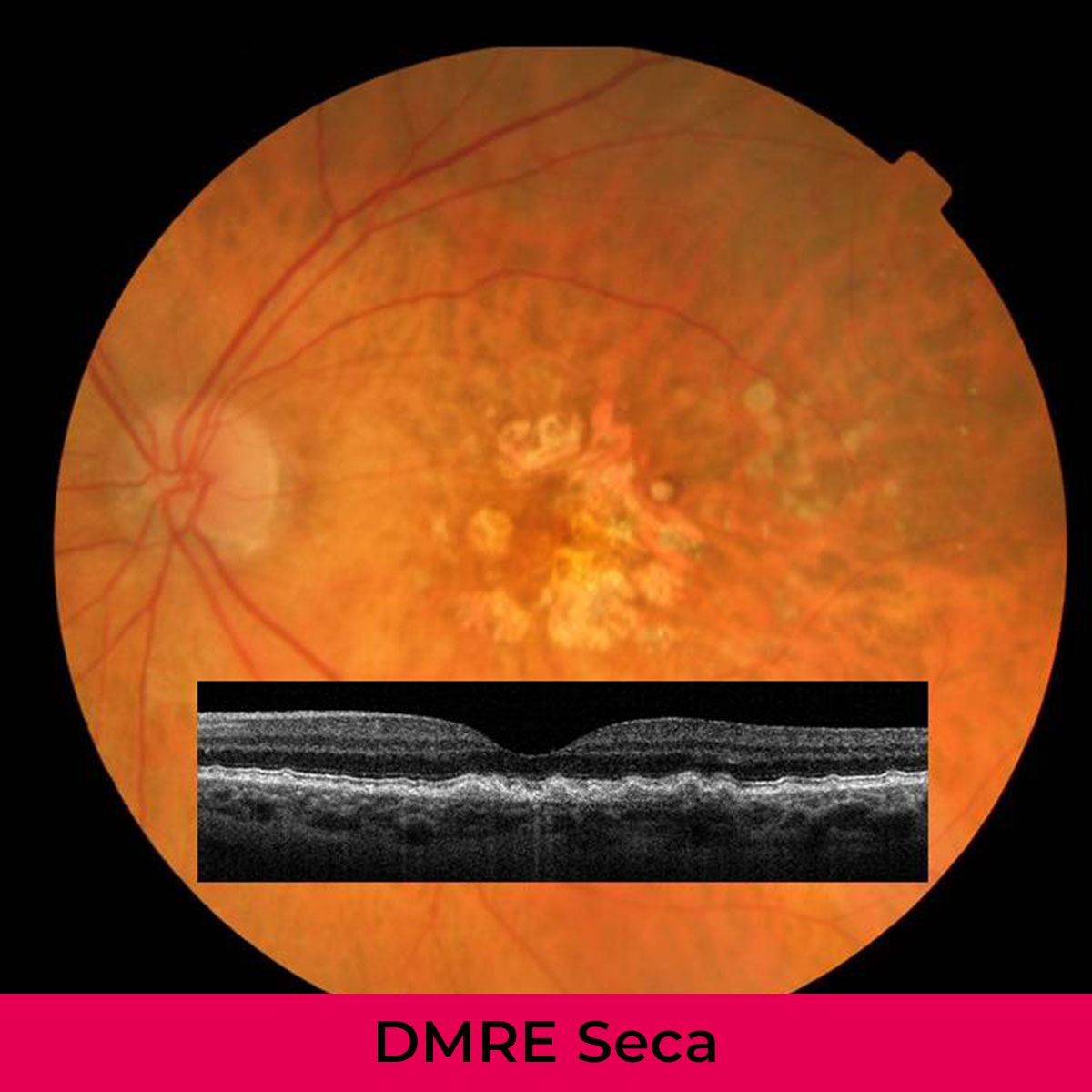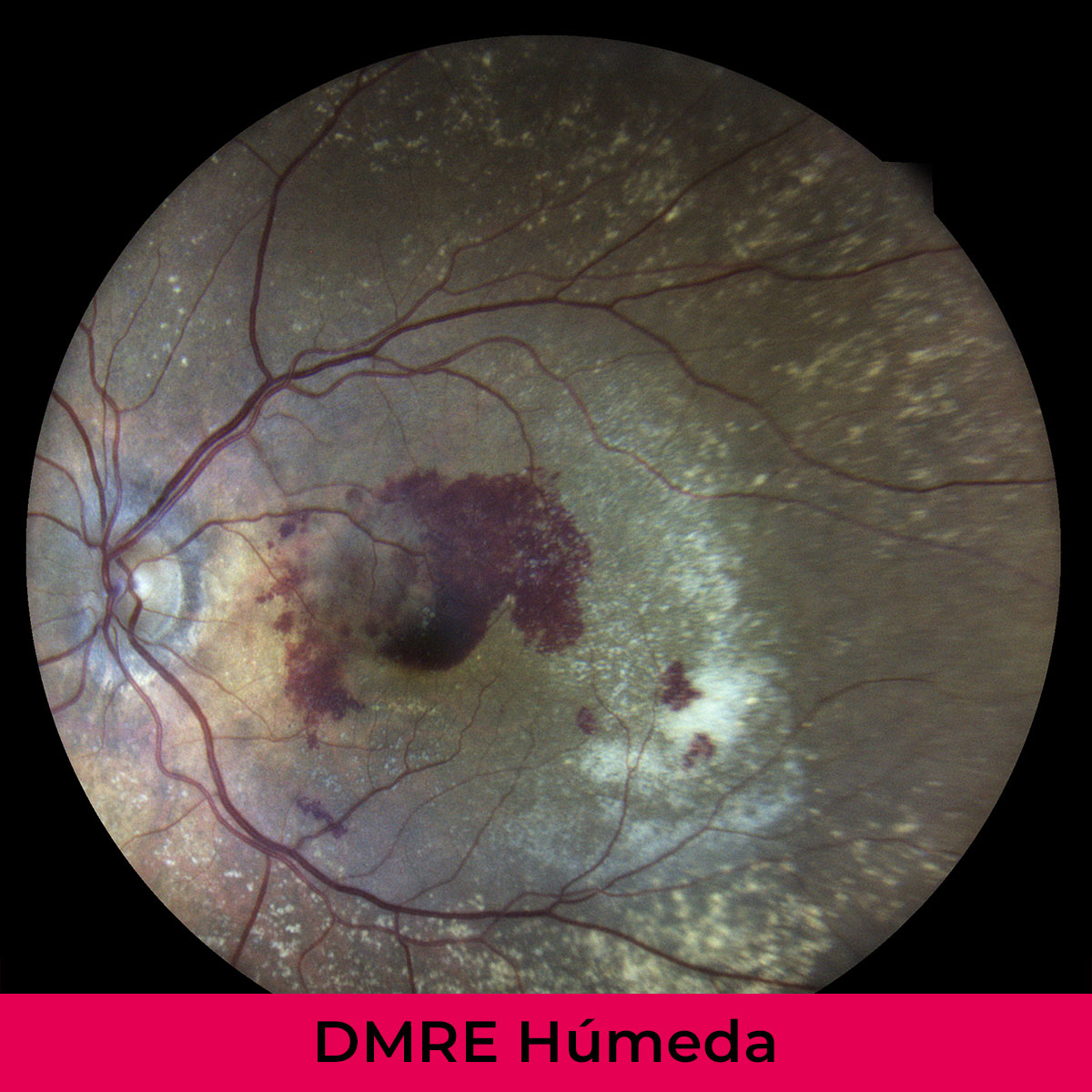ARMD AGE- RELATED MACULAR DEGENERATION
Age- related macular degeneration is the main cause of severe and irreversible loss of vision in the Western world for people over the age of 60. For those over 75, 30% of people are affected by this eye disease to some degree. Early detection allows us to carry out suitable treatment so that useful vision can be preserved.
What is ARMD- Age- related macular degeneration ?
The macula is the central part of the retina, which is responsible for us to be able to see objects which are in front of the eye. When there are alterations in the macula, the center of the image becomes blurred, while what surrounds it can be seen clearly.
What are the causes of ARMD- Age- related macular degeneration ?
The most common type of macular degeneration is related to the aging process (70% of cases ), and for this reason it is called ‘age-related’. Other types of macular degeneration are hereditary or associated with high myopias and can occur in young people. In addition, burst blood vessels and various intraocular infections or inflammations can also damage the macula’s delicate tissue.
The precise cause of why this should develop is unclear ; no treatment has been consistently effective. The two types of age-related macular degeneration (ARMD) are ‘dry’ (atrophic) and ‘wet’ (exudative).
DRY MACULAR DEGENERATION (ATROPHIC)
Most people have the ‘dry’ type of ARMD. It is caused by aging and by the thinning of the macula’s tissues. Usually, loss of vision is gradual.

WET MACULAR DEGENERATION (EXUDATIVE)
The ‘wet’ type of ARMD applies to approximately 10% of cases. It occurs when abnormal blood vessels form under the retina, in the posterior area of the eye. These blood vessels allow liquid or blood to filter through and produce blurred central vision. Loss of vision can be fast and severe.

Deposits under the retina, known as ‘drusen’, are a common characteristic of macular degeneration. These deposits alone do not cause loss of vision, but when they increase in number they can be a sign of advanced macular degeneration developing. People at risk of developing advanced ARMD have a significant number of drusen, prominent ‘dry’ ARMD or abnormal blood vessels under the eye’s macula (the ‘wet’ type).
What are the symptoms of ARMD - Age- related macular degeneration ?
In the initial stages, this disease affects only one eye and many patients do not notice a deterioration of their vision until the second eye becomes affected. Patients complain of something which causes them difficulty with their central vision, for example that the words on a page are blurred , that straight lines become deformed and that central images are distorted or dark.
Can ARMD- Age-related macular degeneration- cause blindness ?
Macular degeneration alone does not cause total blindness. As their lateral vision is not normally affected, the majority of patients can fend for themselves, albeit with certain limitations.
What treatment is there ?
When the degeneration evolves into macular atrophy, there is no effective treatment, although some vitamin supplements, minerals and antioxidants may be useful in delaying the progressive loss of vision. However, intravitreal injections of antiangiogenics which try to remove the blood vessels which affect the macula are useful for exudative types, (vascular membranes which bleed and cause deposits on the macula ). This is only when the treatment is applied early. When treatments do not work, patients can use special optical aids. Whatever the case, the ophthalmologist will decide which course of treatment should be followed for each individual case.
